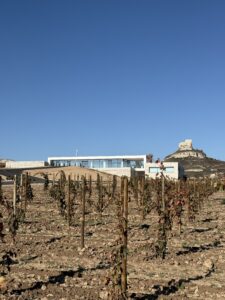Castillo de Arriba de Curiel
About
It is called “Castillo de Arriba” of Curiel because there is a “Castillo de Abajo”, although of the latter only the wall and the keep are preserved (this is the current Palacio de los Zuñiga). The first of the legends about this village tells that both castles were connected by underground galleries, which is not difficult to imagine given the composition of the place. Both castles are protected as “Bien de Interés Cultural”.
The Castillo de Arriba de Curiel de Duero is located on the hill overlooking the village, immediately to the west of the town centre, being the highest inhabited point in the province of Valladolid, and also its oldest castle (it is built on the site of a Roman castellum). The easiest access is via the Camino de Las Bodegas, which are located above the village, at the bottom of the western slope of the hill. The archaeological evidence shows the presence of at least three distinct chronocultural occupations on the hill: one from the Medieval, one Roman and one prehistoric. At the same time, shelters excavated in the limestone rock have been documented, which may possibly be identified as hermitages and may also date from the medieval period.
This castle was the property of several Castilian-Leonese kings and was the marriage dowry of, among others, Doña Berenguela (first-born daughter of Alfonso VIII and architect of the definitive union of the kingdoms of León and Castile), who was Lady of Curiel, which is why the castle is also named after her.
As a curiosity, it is known that, in the 11th century, the maternal grandfather of the Cid Campeador, Rodrigo Álvarez, was a lieutenant of Curiel.
The masonry of the Castillo de Arriba de Curiel dates from the 9th century, and to this day the remains of an important walled enclosure can still be seen, as well as part of the keep and the walls surrounding the enclosure. Its layout is in keeping with the physiognomy of the Curiel hill.
The importance of this castle during the establishment of the Duero border between Christians and Arabs is reflected in the popular saying “Peñafiel would be a very good castle if it did not have Curiel castle in its sights”.
But perhaps the best thing is not in the architectural configuration, but in the panoramic views that can be obtained: the village of Curiel describing a half-moon shape and, looking up, we have a beautiful view of the Duero Valley, also making out the neighbouring castle of Peñafiel. Another legend tells that there was a giant who put one foot in the castle of Curiel and the other in the castle of Peñafiel and drank water from the Duero.
And now for the third of the legends: this castle holds another record: Diego de Castilla y Sandoval (son of Pedro I the Cruel, King of Castile) was imprisoned in this fortress for no less than 55 years (from the age of 11) by order of his uncle, the new Castilian King Henry II, making it one of the longest captivities in the history of Spain.
After a major renovation, this castle has been converted into a hotel-restaurant since 2006. It should be added that Curiel Castle forms part of the so-called “Route of the Castles of the Ribera del Duero” and of the Route of the Castles of the province of Valladolid, one of the provinces with the most castles in Spain.
Details






